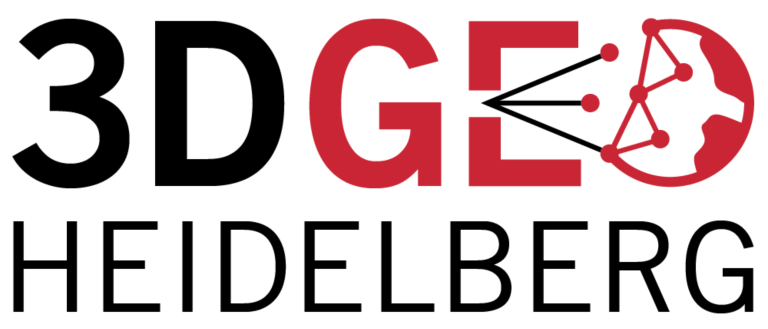Category: OSM
-
AGILE Workshop on Digital Earth: What the hack?
We invite you to participate in our workshop Digital Earth: What the hack?, as part of the 17th AGILE Conference on Geographic Information Science, 3-6 June 2014, Castellón, Spain. The proposed workshop will prepare hackathons including geospatial information and processing across a variety of possible disciplines and thereby implementing Digital Earth applications. Hackathons are a…
-
More than 100 Million Buildings in OpenStreetMap
and therefore also in OSM-3D.org. Just before Christmas the number of building footprints hit the magical number of 100.000.000. “Building” has been for some time now the most frequently used tag defining a map feature in OpenStreetMap. We use the building footprints from OSM to generate an automatically updated special database of 3D buildings displayed…
-
Digital Earth Science Forum “Digital Earth Innovations” at the University of Osnabrueck starts European cooperation
The International Digital Earth Science Forum organized by Institute for Geoinformatics and Remote Sensing (IGF), the Youth Commission of the International Society for Digital Earth (ISDE) and the Association for the Promotion of Geoinformatics in Nothern Germany (GiN e.V.) took place on 4th of December 2013 at the University of Osnabrueck inside the botanical garden.…
-
Impressions from Friday’s Mapping Brunch
Our second Map-a-thon in support of the HOT activation for the Philippines was held on Friday. In a friendly and relaxed atmosphere, ~30 mappers attended the event. The department provided ample amounts of food and refreshments, many thanks to Svend and the Fachschaft for organizing/providing the cutlery, cooking plate and other equipment. A general introduction…
-
The emergence and evolution of OpenStreetMap: A cellular automata approach
Collaborative mapping projects, such as OpenStreetMap (OSM), have received tremendous amounts of contributed data from voluntary participants over time. So far, most research efforts deal with data quality issues, but the OSM evolution across space and over time has not been noted. Therefore, a new study is dedicated to the evolution of the contributed information…
-
Population distribution and Elements at Risk layers for Philippines now available
Knowing where people in need could be in a crisis situation is as crucial as it is difficult. Sometimes the difficulty is just not having a convenient way to display or access extant datasources.As a service to the crisis mappers we supply a Tile Service showing the residential population distribution in the Philipines in 90m…
-
Mapping land-use from OpenStreetMap
An approach toward generating land-use patterns from volunteered geographic information (VGI) without applying remote-sensing techniques and/or engaging official data has just been published in the latest issue of the International Journal of Geographic Information Science. Collaboratively collected OpenStreetMap (OSM) data sets are employed to map land-use patterns. Initially the spatial pattern of the landscape was…
-
OpenMapSurfer is OSM Image of the Week
A map rendering with hillshading by OpenMapSurfer.uni-hd.de is currently the OSM Image of the Week. It is featured on this weeks OpenStreetMap Wiki main page. Congratulations to our team member Maxim Rylov! The images shows the OpenMapSurfer Layer: “OSM Roads (new)” with “ASTER GDEM & SRTM Hillshade (experimental)” overlay. The region displayed is in Greece.…
-
New PhD student position in GIScience
We offer a new position in the area of crowdsourcing of 3D geoinformation within the PhD Graduate School Crowdanalyser. More info can be found here: 2013_crowdanalyser_phd_position. Deadline: 30 Oct. 2013
-
Visiting the National University of Ireland, Maynooth
The Alexander von Humboldt foundation has granted a short European research stay at the department of computer science, National University of Ireland in Maynooth, in support of the osmAGENT project. Jamal as the manager of the osmAGENT project visited the target institute in particular Dr. Peter Mooney and his colleagues in order to collaborate further…
-
Maptember: GIScience group members at SotM 2013
This year the State of the Map conference was held at Aston University, Birmingham, UK. The SotM is the conference on all things OpenStreetMap and at the same time a friendly meetup for hobbyists and professionals alike. Speakers from our group were Christopher Barron and myself. Here is a shot of Christopher during his presentation…
-
Draft Programme for conference “Web 2.0 und Social Media in Katastrophenschutz und Hochwassermanagement”
A first draft list of talks and presentations for the conference “Web 2.0 und Social Media in Katastrophenschutz und Hochwassermanagement” (17.10.2013, Heidelberg, Studio Villa Bosch) is available. In addition there will be several short presentations during the workshop-part of the event. This is a draft programme subject to change: some titles are still working titles.…


